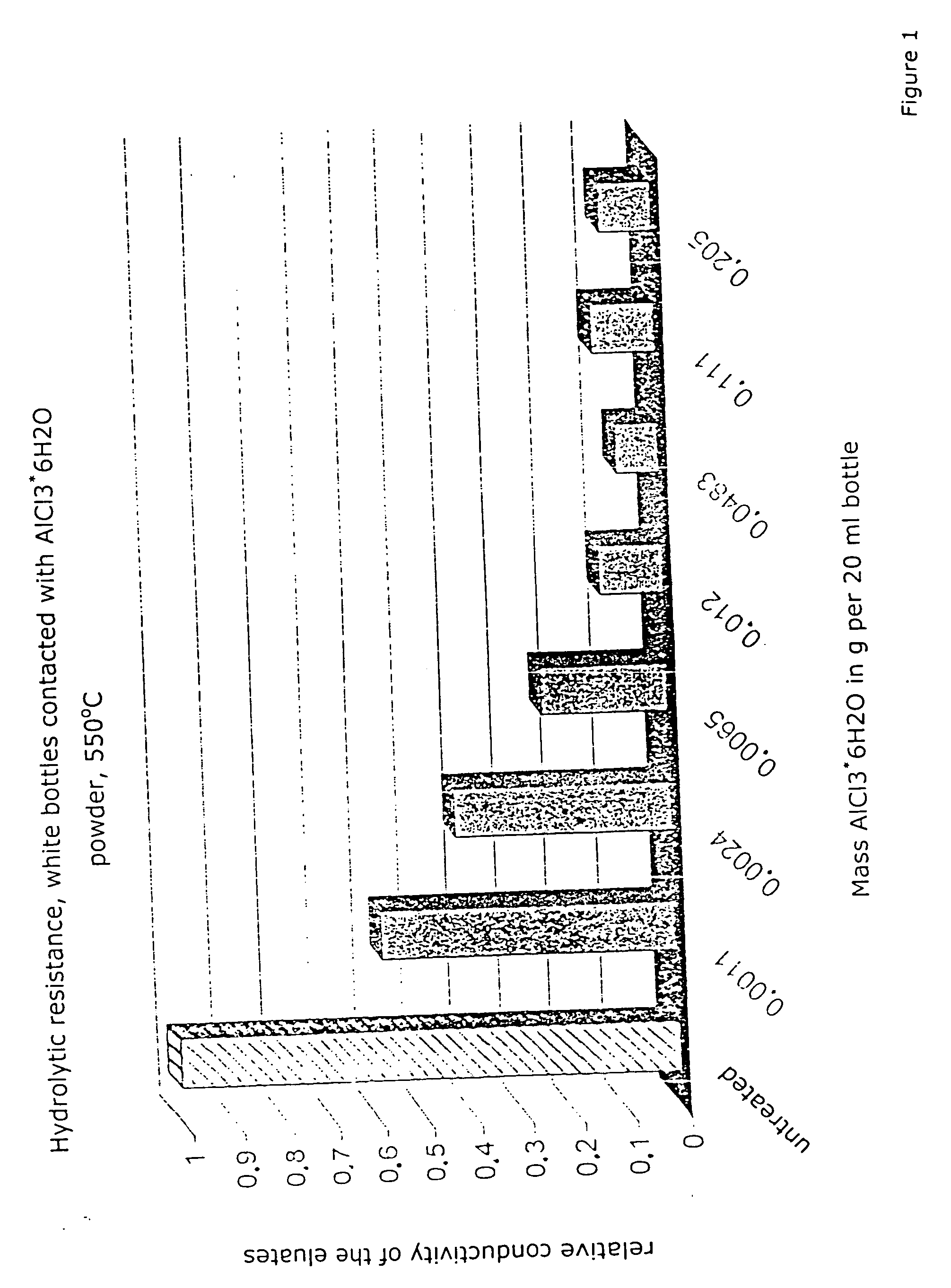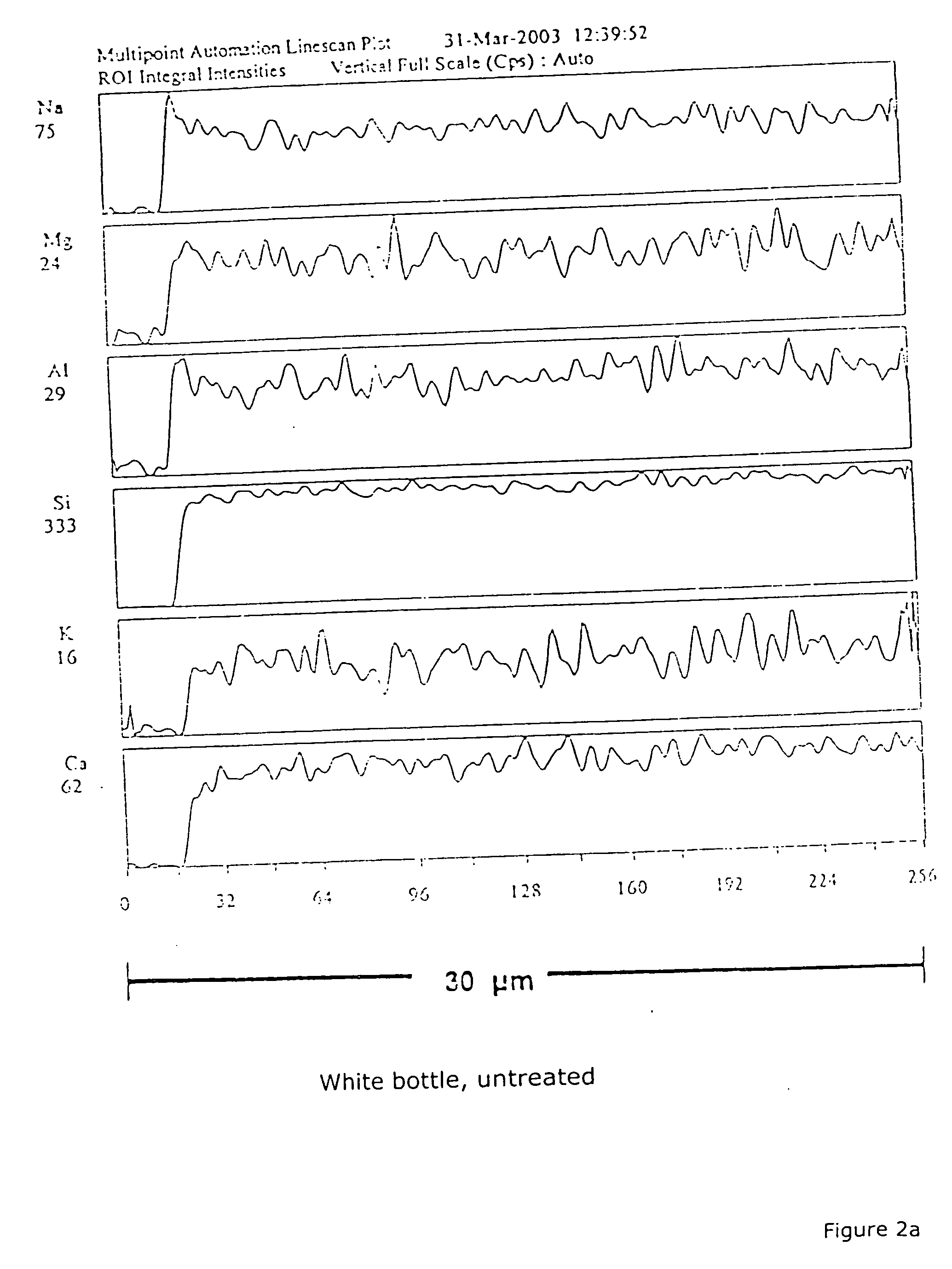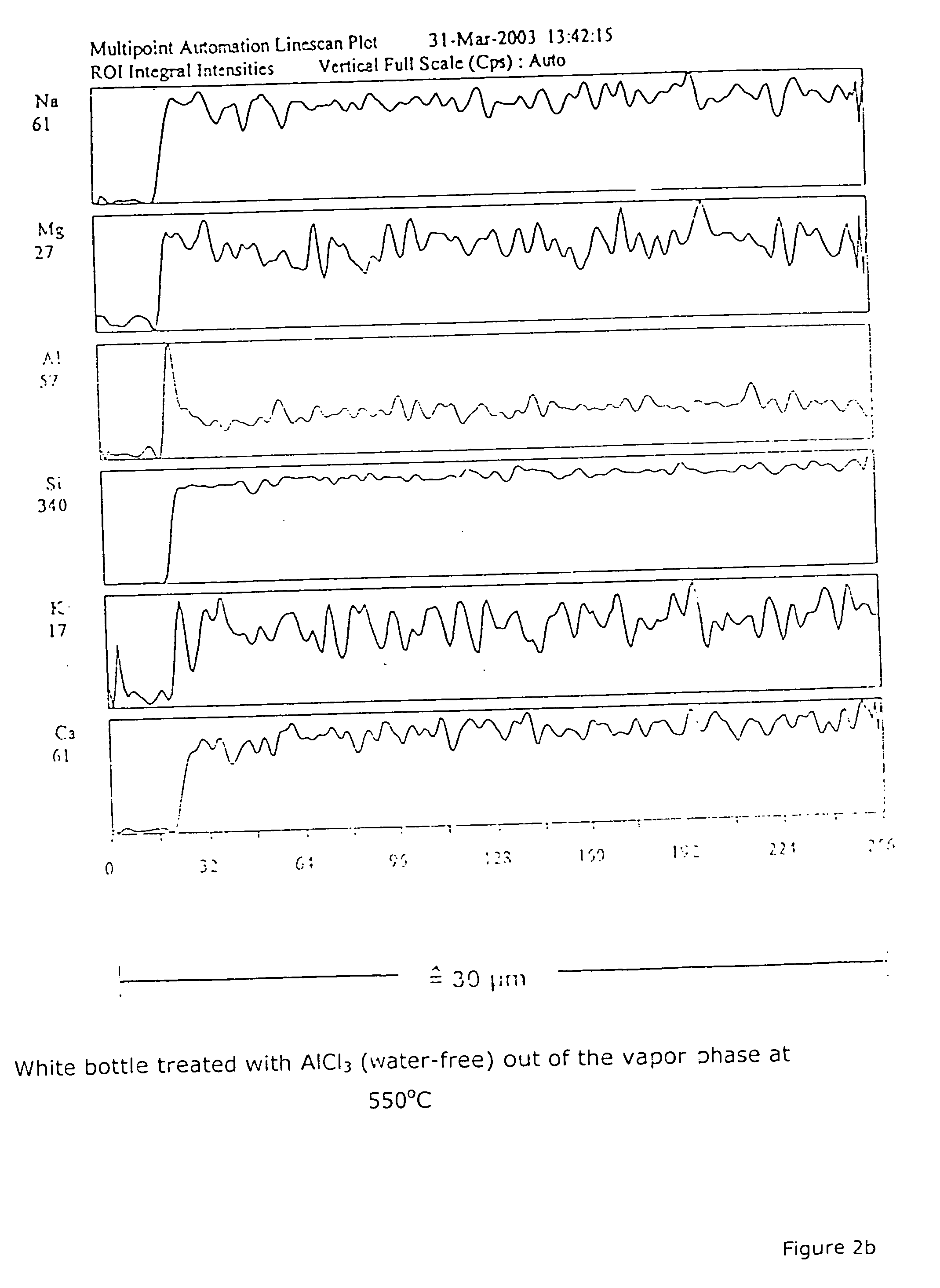Alkaline glasses with modified glass surfaces and process for the production thereof
a technology of modified glass and alkaline glasses, which is applied in the direction of layered products, thin material processing, chemical instruments and processes, etc., can solve the problems of reverse sodium diffusion out of volume to the surface, significant worsening of the properties originally achieved, and deterioration of hydrolytic resistance and mechanical properties, etc., to achieve a high level of negative formation enthalpy
- Summary
- Abstract
- Description
- Claims
- Application Information
AI Technical Summary
Benefits of technology
Problems solved by technology
Method used
Image
Examples
example 1
[0011] As typical results FIG. 1 shows the hydrolytic resistance of white bottles of soda lime silicate glass of the following composition: 71.0% SiO2, 1.7% Al2O3, 0.02% Fe2O3, 1.3% K2O, 15.5% Na2O, 9.4% CaO, 2.7% MgO and 0.2% SO3, wherein the samples were put with various amounts of AlCl3.6 H2O in an furnace at temperatures of 550° C. and then cooled down therein. The amounts of aluminum chloride introduced into the container related to a provided glass surface of 3814 mm2 and a volume of 20 ml, in which respect water-free aluminum chloride was to go into the vapor phase at 180° C. or, according to our own DTA measurements the material, with water of crystallization, breaks down only at temperatures of 203° C. The containers were placed over the sample material and cooled after 15 minutes treatment time in the muffle furnace. Table 1 shows different treatment steps in regard to their effect on hydrolytic resistance.
TABLE 1Conductivity μSSampleMeasurementMeasurementidentification1...
example 2
[0014] In the case of a lead crystal glass, a defined amount (0.05 g and 0.15 g) of AlCl3, together with a glass sample of 25 cm2, was put in a muffle furnace into a corundum pot which was covered with aluminum film. After heating to 470° C. and a hold time of 15 minutes with the muffle furnace being finally switched off and the samples cooled down in the pot, the glasses were analyzed in regard to microhardness. The results are shown in FIG. 4 and exhibit a microhardness which is increased by a good 100% after 150 nm depth of penetration, which can assume even much higher values at still lower depths of penetration.
PUM
| Property | Measurement | Unit |
|---|---|---|
| Temperature | aaaaa | aaaaa |
| Temperature | aaaaa | aaaaa |
| Temperature | aaaaa | aaaaa |
Abstract
Description
Claims
Application Information
 Login to View More
Login to View More - R&D
- Intellectual Property
- Life Sciences
- Materials
- Tech Scout
- Unparalleled Data Quality
- Higher Quality Content
- 60% Fewer Hallucinations
Browse by: Latest US Patents, China's latest patents, Technical Efficacy Thesaurus, Application Domain, Technology Topic, Popular Technical Reports.
© 2025 PatSnap. All rights reserved.Legal|Privacy policy|Modern Slavery Act Transparency Statement|Sitemap|About US| Contact US: help@patsnap.com



